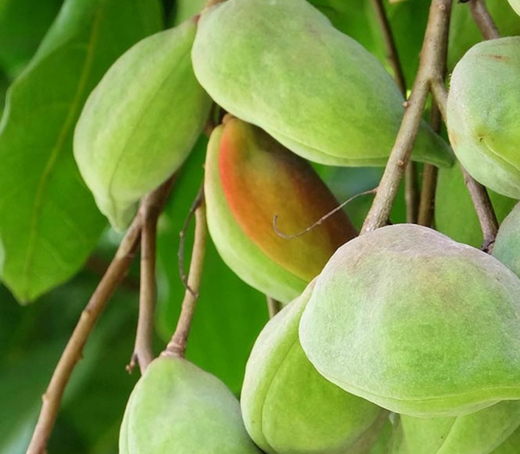
Why Kakadu plum is used in our extracts
If you are familiar with Lifecykel's liquid extracts, you may have noticed that there is a special ingredient called Kakadu plum mixed into all of them. Recently on Bulletproof Radio podcast, Dave Asprey told Lifecykel co-founder Julian Mitchell that he was unfamiliar with the plum, as many people are.
"I thought I knew all the weird stuff and you stumped me on this," said Dave.
Julian said the plum a is very rich and rare fruit, carrying amazing antiviral and anti-oxidant properties. He added that by mixing it with the mushrooms we find it heightens and amplifies the benefits of the mushrooms and adds a little sweetness to the extracts.
What is a Kakadu plum? And where does it grow?
Kakadu plum (scientific name Terminalia ferdinandiana), also called "Gubinge", is a flowering plant native to Australia’s Northern Territory.
For numerous years, Indigenous people of Australia have been using this incredible superfood for everything from a source of food, to a healing remedy and antiseptic.
What else makes the Kakadu plum special?
Kakadu plum contain is said to contain the highest amount of vitamin C of any food in the World, which could be responsible for its strong antioxidant properties, it is thought to exhibit 5.2 times more potency than the blueberry.
Netzel et al., 2007 found that Kakadu plum contains up to 7000 mg of vitamin C per 100g of dry weight, which is 100 times the Vitamin C content in oranges.
Due to its extreme potency, you only need 1g of freeze-dried Kakadu plum powder to match the vitamin C content found in an entire orange.
Why is vitamin C important?
Vitamin C is an essential vitamin. Consuming above the essential level is recognized to provide additional health benefits and has been associated with a reduced incidence of some diseases. Vitamin C is also known to promote the uptake of iron [2].
Why do we use Kakadu Plum in our extracts?
We decided to include Kakadu plum as an infused ingredient within our extracts for its health benefits which enhance the effect of the mushrooms while acting synergistically with them. We believe because of its high content of vitamin C, It acts as a natural amplifier of the mushroom effect.
An interesting study published in 2015 by the Griffith University has shown that Kakadu plum has potent inhibitory bioactivity against the bacterial triggers of autoimmune inflammatory disorders which indicates its potential as a medicinal agent in the treatment and prevention of these diseases [3].
The second main reason why we wanted to use the Kakadu plum is for the incredible natural sweetness it brings to the mushroom extract. Indeed, the taste of the fruit is tart with a delightful aroma of stewed apples and pears, with some cooked citrus, pickled and floral musk essence.
So we think the real question is, why wouldn't we use it?!
In case you missed the podcast with Dave Asprey, click here!
References:
[1] Netzel, M. et al., 2007. Native Australian fruits -- a novel source of antioxidants for food. Innovative Food Science & Emerging Technologies, 8, 339-346.
[2] Vicente, A. R. et al., 2009. Nutritional Quality of Fruits and Vegetables. Postharvest Handling (Second Edition).San Diego: Academic Press.
[3] Shalom et al., 2015. Journal of Functional Foods 17:610-620 · June 2015Kakadu plum fruit extracts inhibit growth of the bacterial triggers of rheumatoid arthritis: Identification of stilbene and tannin components
Photo shared on Instagram by @ecobeautysanctum














 Mushrooms are... well... Mushrooming!
Mushrooms are... well... Mushrooming!


Leave a comment